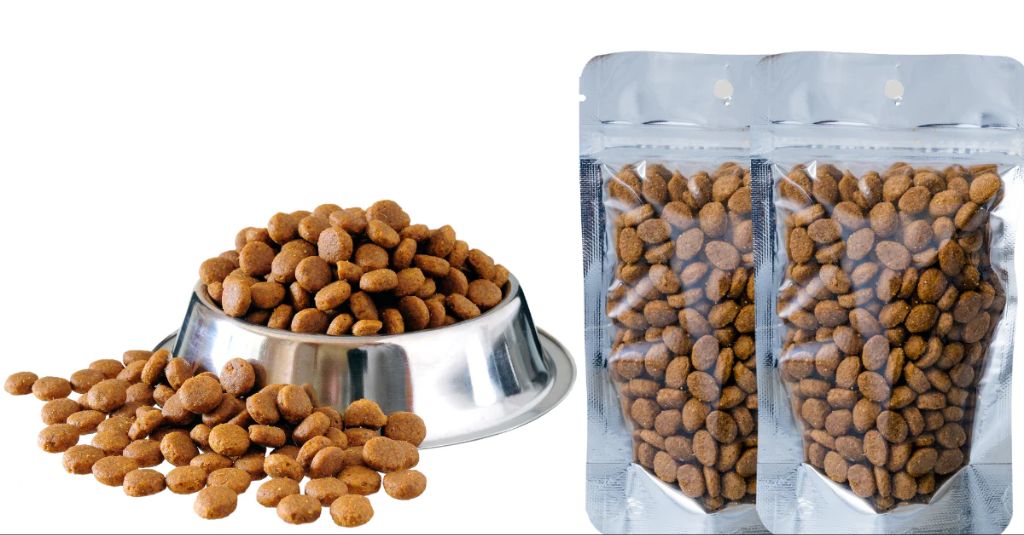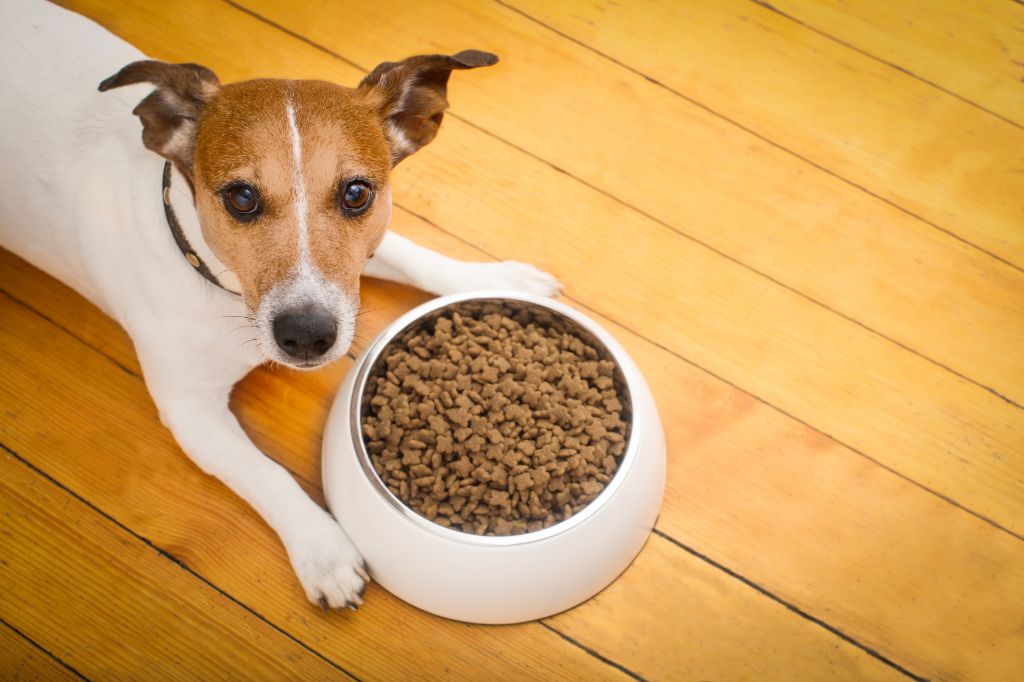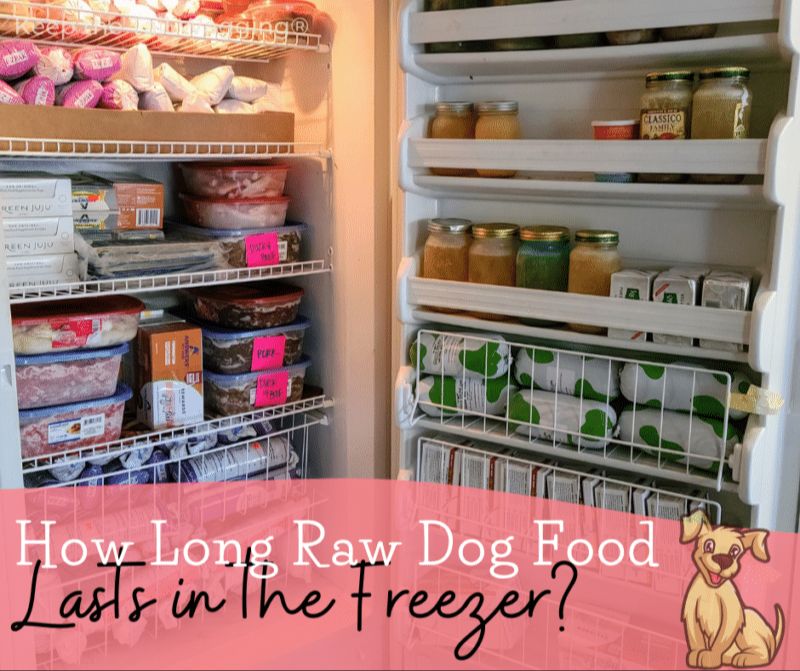Introduction
Dry dog food, also known as kibble, is a very convenient and cost-effective way to feed our canine companions. Kibble can be stored easily and has a relatively long shelf life compared to wet dog foods. However, kibble can still go bad over time if not stored properly.
Freezing kibble is a common technique used by pet owners to prolong the shelf life. But there are certain factors that impact how long frozen kibble stays fresh and safe to eat. This article will examine how freezing affects kibble freshness, best practices for storage, signs that frozen kibble may be stale, and how long it can be safely kept in the freezer.
What Makes Kibble Go Stale
Kibble can go stale due to the natural degradation of fats and oils over time. Dry dog food contains animal fats which provide energy and palatability. However, these fats are susceptible to oxidation, especially when exposed to air. Oxidation causes rancidity, leading to off-flavors and odors [1].
Once a bag of kibble is opened, the remaining oxygen inside speeds up the oxidation process. Kibble left in bowls is especially vulnerable as more surface area is exposed to air. Storing opened kibble in an airtight container helps slow staleness [2].
Temperature fluctuations also degrade kibble over time. The vitamins, minerals, and other nutrients degrade faster when exposed to heat, light, and moisture. Keeping kibble in a cool, dark place preserves freshness longer [3].
Freezing Slows Down Staleing Process
Freezing dog food reduces the rate of chemical reactions that cause food to go stale. Enzymes and other biological agents react more slowly at colder temperatures. According to the University of Minnesota, “Chemical changes during freezing…continue to undergo chemical changes that can cause spoilage and deterioration of quality, but at a much slower rate.”
For best results, kibble should be frozen below 0°F. The USDA recommends storing frozen foods at 0°F or lower to halt bacteria growth. Temperatures below 0°F dramatically slow chemical reactions that stale food. While freezing doesn’t completely stop staleing, it can significantly extend a dry dog food’s shelf life if stored properly.
Source: https://extension.umn.edu/preserving-and-preparing/science-freezing-foods
Proper Storage Key for Frozen Kibble

Proper storage is crucial for maintaining the freshness and quality of frozen dog kibble. Here are some best practices when it comes to storing frozen dog food:
Use airtight, moisture-proof containers like plastic containers or ziplock bags. This prevents freezer burn and keeps the kibble from absorbing odors from other foods. According to Chewy, “The best containers for frozen pet foods are plastic, glass or metal” 1.
Limit repeatedly opening the freezer to get food out. Every time the freezer is opened, it lets in warm air that can lead to moisture accumulation. Take out larger portions at one time rather than small scoops.
Avoid freezer burn by ensuring no kibble is exposed to air in the container. Press out excess air before sealing and use containers that minimize air exposure.
Follow the “first-in, first-out” rule by using older portions of frozen kibble before newer ones. Rotate the stock to keep it as fresh as possible.
Check containers periodically for ice crystals which indicate freezer burn. Discard any portions that show signs of deterioration.
Best Practices
To maintain freshness and quality when freezing dry dog food, it’s important to follow some best practices:
First, portion kibble into airtight containers or freezer bags before freezing. This prevents the food from being continually exposed to air each time the bag is opened, which can cause it to stale faster. Make sure to push out any excess air before sealing the containers.
Next, label each container or bag with the date it was frozen. This allows you to easily identify which batches need to be used first, following the standard FIFO (first-in, first-out) system. The oldest portions should be used first to avoid any kibble expiring before you get to it.
A good rule of thumb is to use up frozen kibble within 6-12 months. So when freezing in batches, be sure to portion out only as much as your dog will consume during that timeframe. Rotating and replenishing with fresh kibble as you use up older portions is key.
Properly freezing dry dog food in airtight containers, labeling with dates, and adhering to the FIFO system can help maximize shelf life and prevent waste. Following these simple practices ensures your pup’s kibble stays fresh and nutritious when stored long-term.
Sources:
https://www.petsradar.com/advice/can-you-freeze-dry-dog-food-how-to-store-dog-food
Signs Kibble May Be Stale

There are several signs that indicate your dog’s kibble may have gone stale and should be discarded:
Dryness or brittleness – Stale kibble often loses its soft, chewy texture and becomes hard and brittle. If the kibble fractures or breaks instead of bending when pressure is applied, it’s a sign it may be past its prime.[1]
Rancid odors – Kibble contains fats that can oxidize over time, leading to a rancid smell. If you detect a sour, musty, or unpleasant odor, it likely means the food has spoiled.[2]
Discoloration – Look out for changes from the kibble’s natural color, such as grayish, brownish, or yellowish hues. This signals degradation of nutrients and the growth of mold or bacteria.[3]
Mold growth – Tiny furry spots or fuzzy coating on the kibble is a clear giveaway of mold contamination. Toss kibble at first signs of mold.
Trust your senses – if the kibble looks, smells or feels off in any way, err on the side of caution and discard it.
Max Freezer Life Estimates
When it comes to the maximum freezer life for dry dog food, there are some general guidelines to follow. According to experts, 6 months is the ideal length of time to store kibble in the freezer before it may start to degrade in quality and freshness. Freezing can extend the shelf life significantly, but kibble that sits frozen for longer than 6 months may begin losing some nutritional value and palatability.

At an absolute maximum, dry dog food that has been continuously frozen can last up to 1 year before becoming stale or rancid. However, freezing for this long is not recommended. The optimal freezer storage time is 6 months or less. Freezing protects the kibble but does not stop the staling process completely. Beyond 6 months, kibble may start experiencing reduced vitamin potency, taste changes, freezer burn, and other negative effects from prolonged freezing.
When freezing kibble, be sure to follow proper storage guidelines and thaw/transition properly. With ideal conditions, kibble can stay fresh in the freezer for up to 6 months. But for the best quality and nutritional content, use frozen kibble within that 6 month timeframe.
Thawing and Serving Frozen Kibble
When it’s time to feed your dog, the safest way to thaw frozen kibble is by letting it thaw slowly in the refrigerator. Simply remove the desired number of bags from the freezer and place them in the fridge to thaw for 24-48 hours before feeding.
Avoid thawing frozen dog food in the microwave, as this can create hot spots that could burn your dog’s mouth. Microwaving also tends to draw moisture out of the kibble unevenly.
If you need to thaw the food faster, place the bag in a bowl of cool water, changing the water every 30 minutes until thawed. Or, slowly sprinkle some warm water over the kibble and let it sit for 10-15 minutes before serving.
Whatever thawing method you use, be sure to go slowly and check the temperature before feeding to your dog. The last thing you want is to accidentally scald your pup!
When in Doubt, Throw it Out

Frozen kibble that has been stored properly should remain fresh and safe to feed as long as it has been kept frozen. However, once thawed or reheated, the clock starts ticking on how long the food will stay fresh and edible. Pet food that has spoiled can make your dog sick, so it’s better to be cautious. Trust your senses – if the thawed or reheated kibble smells rancid, looks moldy, or just seems “off,” don’t take chances. Toss it out and get a fresh bag.
Possible signs of spoiled kibble include an unpleasant, sour, or ammonia-like smell, change in color or texture, clumping, foggy appearance, or visible mold. Food poisoning in dogs is no joke and can lead to vomiting, diarrhea, dehydration, or even kidney damage. Don’t risk your dog’s health – safety first. If there is any question about the freshness or safety of thawed or reheated frozen dog food, be prudent and throw it away. Get a new bag so you can feel confident your pup is getting wholesome, nutritious meals.
The Bottom Line
The bottom line is that freezing your dog’s kibble can help extend its shelf life by slowing down the staleing process. However, proper storage is key – kibble should be frozen in an airtight container or freezer bag to prevent moisture loss and freezer burn. And once thawed, frozen kibble should be used within a reasonable timeframe before it goes stale.
In general, kibble frozen properly can stay fresh in the freezer for around 6-12 months. But when in doubt, use your senses – if thawed kibble smells, tastes or looks off, it’s best to toss it out and not take any chances. While freezing buys you some extra time, kibble won’t last forever, even in the freezer.
The takeaway is that freezing can help prolong freshness and reduce food waste. But you still need to practice first-in-first-out rotation and monitor freezer life. With the right storage and handling, freezing is an effective way to keep your pup’s kibble fresher for longer.